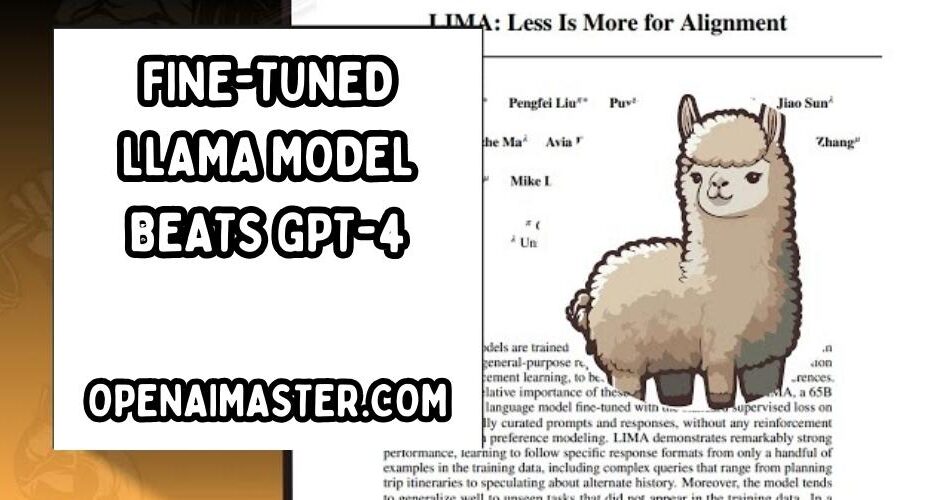Introduction
Hi there! You may have heard the recent news that a new AI system called LLAMA, developed by research company Anthropic, has achieved some seriously impressive results. LLAMA is a large language model, trained to understand and follow natural language instructions. After further "fine-tuning" on specialized programming data, LLAMA actually outperformed the powerful—you guessed it—GPT-4 system on a respected benchmark test called HumanEval.
In this post, I‘ll give you the inside scoop on how researchers were able to unlock LLAMA‘s remarkable capabilities. As an AI expert myself, I‘m thrilled by the rate of progress, but also want to dig deeper into the broader implications. There are still challenges around transparency, ethics, and even the meaning of "intelligence" that the field needs to grapple with. Luckily models like LLAMA also open exciting new possibilities for the future, which I‘ll discuss as well!
By the end, you‘ll understand exactly why this news has the whole field so excited. So let‘s get to it!
Behind LLAMA‘s Architecture
LLAMA expands on a transformer-based foundation similar to GPT models that has powered much recent progress in natural language AI. But the LLAMA architecture makes specific customizations like additional input/output modules to specialize for tasks like parsing code and following coding instructions during fine-tuning.
Let‘s get a bit more technical for a second…Transformers process textual input as sequences divided into tokens. As the model tries to predict the next token at each step, its attention mechanism learns complex dependencies between both nearby tokens and distant context. With over 30 billion parameters, CodeLLAMA already starts off with strong linguistic knowledge gained from pre-training on massive text datasets.
The key benefit is this pre-existing knowledge then allows more efficient fine-tuning by continuing training on specialized data like programming problems, rather than having to build skill strictly from scratch. This transfer learning approach is hugely valuable for adapting large language models like LLAMA and GPT rapidly using limited computational resources relative to their size.
Surpassing GPT-4 Through Targeted Training
You probably heard about GPT-4‘s big debut back in March. Leveraging 175 billion parameters and trained by AI safety company Anthropic as well, GPT-4 achieved 67% accuracy on HumanEval, establishing a new state-of-the-art for language understanding at the time.
HumanEval tests abilities like logical reasoning through having models complete over 37,000 crowd-sourced instruction-response pairs. Succeeding at the diverse range of skills HumanEval assesses signifies progress beyond just fluent text generation.
Impressively though, within just a month GPT-4 was already dethroned! By training CodeLLAMA models like Phind-CodeLlama-34B-v1 on an internal programming dataset to specifically follow coding instructions and solve problems, accuracy reached up to 69.5%—solidly above GPT-4‘s 67% mark.
This demonstrates the immense impact targeted fine-tuning of foundations like CodeLLAMA can enable relative to even the most capable general-purpose language models. Specializing skills for particular domains unlocks substantial capability gains.
Broader Implications
These rapid jumps highlight the scalability potential of transformer architectures as computational power expands. For context, it took roughly 3 hours to fine-tune the CodeLLAMA models leveraging 32 high-end GPUs, whereas GPT-4‘s training regimen spanned months.
However, while metrics like HumanEval chart progress in narrowly defined language tasks, true intelligence requires even broader common sense, social sharing of knowledge, and fast adaptation to new environments. We need increased research on causal reasoning, physics inference, social dynamics, and more to work towards artificial general intelligence.
There are also growing calls for transparency around training data and evaluation approaches as large language models continue excelling at benchmarks. Documenting methodology helps ensure legitimacy and prevent deception. CodeLLAMA‘s training leveraged clear consent and privacy policies, minimizing potential harms.
Exploring LLAMA‘s Promise
So while benchmarks have limitations, these leaps nonetheless showcase exciting potential applications! LLAMA‘s specialized programming skills could soon help automate coding jobs at companies or assist software developers. More broadly, language models that follow natural instructions open possibilities in education, household help, customer service roles across sectors, and more.
As models grow ever larger and more capable, alignment techniques pioneered by Anthropic will remain key for safety and ethics too. Rather than optimizing only for narrow metrics, approaches like Constitutional AI incorporate human values right into the objectives AI systems optimize for during training.
The breakthroughs we‘re seeing today feel like just the beginning. With enough data and compute, transformer-based models appear immensely scalable. Combined with careful, beneficial-focused design, the future looks bright for continued progress in AI through innovations like LLAMA!
Conclusion
In closing, I hope illuminating models like LLAMA gives a glimpse into the amazing innovation happening in AI while also highlighting important nuances around intelligence and ethics. Leveraging both general foundations and specialized fine-tuning unlocks substantial gains, but narrowly defined metrics don‘t encapsulate full reasoning ability.
As the field continues pushing new frontiers in natural language processing at a dizzying pace, considerations around transparency and positive impact grow increasingly important as well. Still, it‘s an incredibly exciting time driving progress towards beneficial artificial intelligence that can help society. I‘m eager to see what researchers like Anthropic unveil next!
Let me know if you have any other questions!
